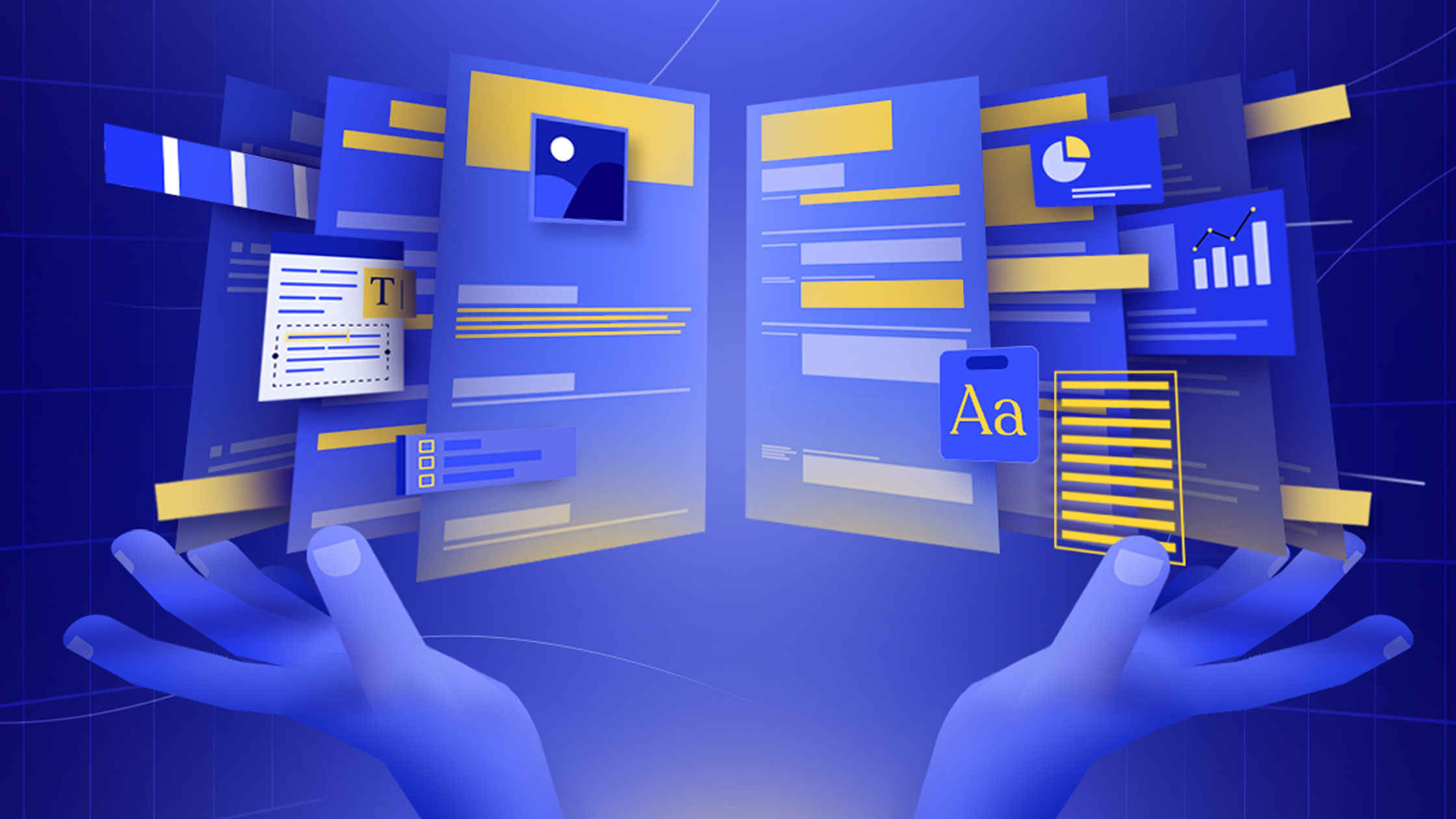Graphic design is a blend of art and science, requiring both structured planning and creative flair. A structured approach to graphic design improves design quality, boosts productivity, and minimizes frustration within any design team. In this article, we are diving into the 5 step graphic design process that every creative designer should master.
What is a graphic design process?
The graphic design process involves several stages. Each stage is essential for ensuring the final design meets the client's objectives and resonates with the target audience.
The 5-Step graphic design process
- Creative Brief
- Graphic design research
- Brainstorming
- Execute and review at 10/50/100 stage
- Design presentation

Creative Brief
A creative brief is a document that helps designers understand the project's scope. This initial step is crucial as it serves as a roadmap, ensuring all stakeholders understand the project's goals and expectations. Here are the main components typically included in a creative brief:
- Project Overview: A summary of the project, including its purpose and scope.
- Objectives: Clear and specific goals the project aims to achieve.
- Target Audience: Detailed information about the intended audience, including demographics, preferences, and behaviors.
- Key Messages: The main messages or themes that the design should convey.
- Brand Guidelines: Any brand-specific rules or guidelines, such as color schemes, typography, and logos.
- Deliverables: A list of all expected outputs, such as print materials, digital assets, or packaging designs.
- Timeline: A schedule outlining key milestones and deadlines.
- Budget: Information on the budget allocated for the project.
- References: Examples of similar work that the brand team likes or doesn’t like
- Additional Requirements: Any other specific requirements or constraints that need to be considered.
This document serves as a foundational tool for guiding the design process from concept to completion. Therefore, it is important to discuss creative briefs in person or via video to clarify uncertainties and ensure alignment.
You can also download this ready-to-use template to write your next creative brief.
Graphic design research
Once your goals are clear through the creative brief, the next step is research. This involves understanding the audience, target platform, and any cultural or social factors that may influence design decisions.
You can divide your research into 3 parts.
1. Audience research
Audience research forms the foundation of your design project because it informs how you will approach content and design to effectively engage your audience. The client usually provides audience demographic details which should be covered in the creative brief. These details include psychographics (values, attitudes, lifestyles), behaviors, needs, and pain points.
Having this information allows for straightforward navigation of your research through the design lens, including:
- Analyzing competitors within the industry to understand their design strategies
- Evaluating the content and designs that effectively engage the audience
Create a mood board based on these insights and research findings to guide the design direction.
2. Platform-specific design research
Once you have a solid understanding of your audience, investigate the platforms where your content will be presented or distributed. This could be social media platforms, websites, apps, or specific digital environments. Understand the platform's demographics, user behaviors, content preferences, and engagement patterns. This step ensures that your content and design are tailored to fit the platform's requirements and user expectations.
When conducting platform-specific research, here are some key points to consider:
- Technical Specifications: Understand the platform's requirements for image, video, and animation formats, dimensions, resolution, and file sizes.
- Design Guidelines: Familiarize yourself with recommended color schemes, typography guidelines, and visual styles that align with the platform's aesthetics and user experience.
- Accessibility and Compliance: Ensure designs meet accessibility standards and platform-specific regulations, optimizing for readability, and usability across devices.
- Optimization and Best Practices: Implement design strategies that leverage platform-specific features to maximize engagement, including use of native features like stories, reels, live streaming, and creative editing tools.
3. Cultural & contextual design research
Finally, delve into the specific content and context relevant to your project. Design with an understanding of the context in which your audience will encounter your work. Consider the cultural, social, and environmental factors that may influence how your design is perceived and interpreted. Design elements such as color, symbolism, typography, imagery, and layout should be carefully analyzed for cultural and contextual sensitivity. For example:
- Color Symbolism: The color red symbolizes luck and prosperity in many East Asian cultures, but it can also represent danger or warning in Western cultures. When designing for a diverse audience, consider the cultural meanings of colors to ensure your design communicates the intended message without confusion or misinterpretation.

vs

- Imagery & Font: When choosing imagery and fonts, prioritize cultural sensitivity and inclusivity. Select fonts for readability and aesthetic appeal while respecting diverse cultural preferences. Airbnb conducts extensive cultural research to adapt its website design and user interface to local customs and preferences. This includes language localization, imagery selection that reflects local landscapes and architecture, and understanding cultural expectations regarding hospitality and accommodations.

Brainstorming
Prior to fully committing to a project, it is essential for the designers to brainstorm multiple design solutions. This helps speed up the design process by weeding out ineffective ideas early. Designers may then narrow down on one or two final solutions based on feedback from peers, or if they are a solo designer, using methods like mood boards and word association.
Here are some common brainstorming techniques for solo and team designers:
Brainstorming for solo designers:
- Word association:
Take a sheet of paper and start jotting down any words that come to mind when thinking of your project. Once you’re done, take a step back and try to find a correlation between the ideas.
- Cubing
Start by drawing a set of rectangles that look like a deconstructed cube. Then, add one of the following tasks to each of the sides of your cube: describe, compare, associate, analyze, apply, and argue for or against. Now, use the space to complete each of those tasks. For example, describe your project idea within the rectangle labeled “Describe”.
- Mood board
First, search for images of designs you like, color schemes that resonate with you, items your ideal customer would own, etc. Finally, make a collage out of all of your clippings and see what it reveals.
Brainstorming for design teams:
- Rapid ideation:
Give all your participants a piece of paper and a few minutes to jot down as many ideas as they can come up with. For this one, it’s important to focus on quantity and not quality. Once time is up, compare notes and try integrating several good ideas into a powerful final one.
- Mind Mapping:
Start with a topic and ask others in the room to come up with ideas that branch out from that topic. Once you have those, move on to the next layer of branching. For example Travel → Destinations → Hotel Finder → Sharing Platforms.
- Star bursting:
Similar to cubing, the starbursting technique asks you to consider six different angles — in this case, questions. Ask your team to consider your main topic and answer the following questions: who, what, how, where, when, and why. A good way to visualize this brainstorming technique is by drawing a six-pronged star and adding a question to each of them. From there, you can add Post-it notes with answers around each point.
For creative leaders and aspiring designers, exploring different brainstorming techniques to enhance your creative process further is beneficial.
Execution & review at 10/50/100 stage
The 10/50/100 stage design review process ensures structured iterative improvement, refining and aligning with project objectives at key milestones.
10% Completion: Low Fidelity (Wireframes)
- Design details: This stage focuses on laying out the structure and key elements of the design without getting into detailed aesthetics.
- Feedback: Stakeholders and clients should provide input on whether the layout and structure align with project goals and user needs.
50% Completion: Medium Fidelity (Major Decisions Made)
- Design details: This stage involves making major design decisions regarding visual hierarchy, typography, imagery, and overall layout.
- Feedback: Focus feedback on the execution of the design vision and adherence to project requirements.
100% Completion: High Fidelity (Pixel Perfect)
- Design Details: This phase ensures that the design meets all specified requirements and is visually polished with all the details like spacing, colors, typography, and minor adjustments.
- Feedback: Stakeholders and clients provide feedback on the finalized design, focusing on any remaining adjustments before design implementation.
Design presentation
How you convey your ideas and solutions to clients holds immense power in shaping their perception and acceptance of the design. A compelling presentation not only showcases the merits of your work but also reassures clients that their needs are heard and addressed effectively.
Tips for effective remote presentation strategies include
- Use video conferencing, screen recording, and collaboration tools to present designs clearly and interactively.
- Explain the background and rationale behind design decisions to ensure clients understand the thought process and goals.
- Showcase only the strongest design options to maintain focus and clarity, avoiding overwhelming clients with excessive choices.
- If you are not presenting your work in a meeting, you can use tools like Loom or Visme to record your screen and explain the thought process behind the design you're sending.
Conclusion
A structured approach to design projects can significantly enhance efficiency and effectiveness for both designers and marketers. By following a clear, organized process, designers can streamline their workflows and ensure consistency across projects. This not only saves time but also allows for more creativity. For marketers, a structured approach ensures that design outputs are aligned with strategic goals and brand guidelines, making it easier to achieve cohesive and impactful marketing campaigns.
Frontmatter enables this structured approach through cutting-edge technology and access to expert designers. Along with that, regular updates on design projects keep everyone on the same page, ensuring timely and high-quality results.
Ready to revolutionize your design process? Try Frontmatter today and experience the benefits of structured, efficient, and effective design collaboration.
Costs less than agencies.
.svg)






.svg)


